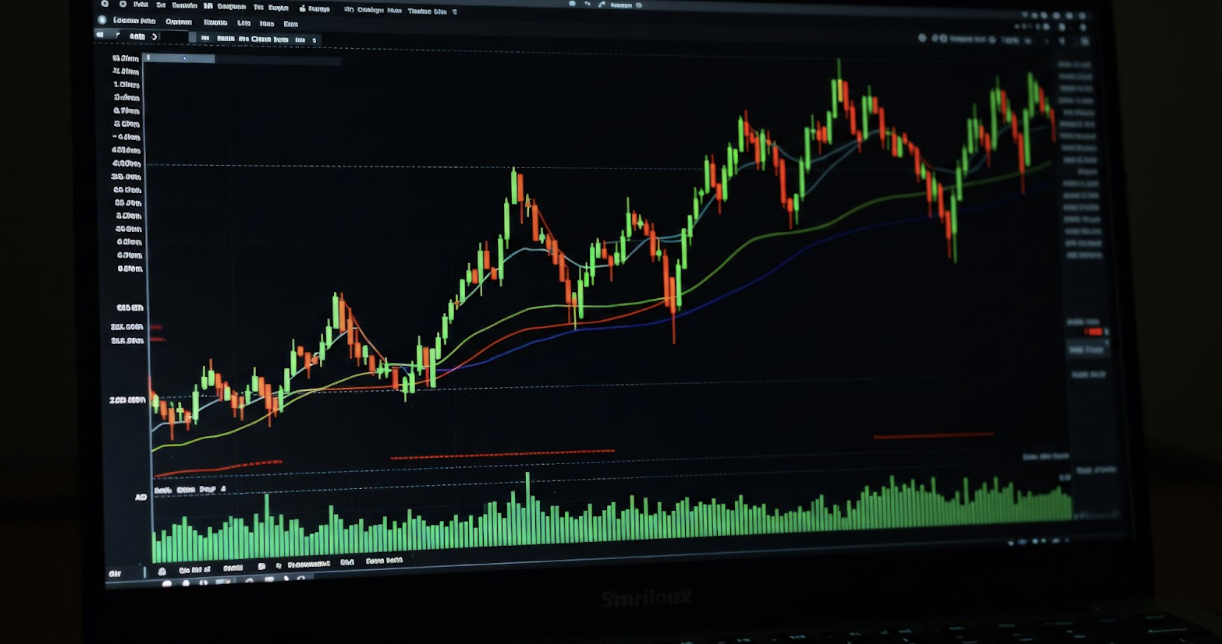Chart Pattern Recognition at Scale: Using Trade Ideas for Technical Setups
Chart Pattern Recognition at Scale: Using Trade Ideas for Technical Setups
Many traders don’t realize that manual chart analysis, while foundational to technical trading, becomes a significant bottleneck in today’s high-speed markets. In a space where hundreds of potential setups form and dissolve across thousands of stocks simultaneously, the human eye simply cannot process the volume of chart patterns that emerge daily across multiple timeframes and market sectors. This leads even experienced technicians to miss profitable opportunities that institutional traders capture through systematic pattern recognition systems.

Professional trading firms have long understood that combining technological scanning power with human technical expertise creates a sustainable competitive advantage—not by replacing pattern knowledge, but by scaling it beyond the limitations of manual analysis. The key distinction lies in understanding that technology serves as a force multiplier for existing technical skills rather than a replacement for pattern recognition expertise. Successful systematic pattern trading requires a deep understanding of why patterns work, when they fail, and how market conditions affect their reliability, then leveraging automation to identify and filter these setups at scale. This approach transforms pattern trading from a time-intensive, hit-or-miss endeavor into a systematic process that can identify high-probability setups across entire market universes while maintaining the necessary human judgment.
Classic Patterns in the Digital Age
Traditional chart patterns remain relevant in modern markets, but systematic identification transforms their application from subjective interpretation to objective statistical analysis. Breakout patterns, including triangles, rectangles, and consolidation setups, benefit significantly from automated volume confirmation requirements that eliminate the false signals common in manual analysis. Volume requirements can exceed 150% of the 20-day average during breakout attempts, filtering out weak moves likely to fail. False breakout filtering becomes systematic through time-based pattern validation, where breakouts must hold above resistance for at least two consecutive sessions with sustained volume to qualify as legitimate signals rather than temporary spikes.

Reversal patterns, such as head-and-shoulders formations and double tops, achieve dramatically higher success rates when systematically identified. Statistical analysis shows that computer-identified patterns with proper volume divergence confirmation produce 65-70% success rates, compared to 45-50% for manually identified setups. The key lies in volume divergence as a confirmation factor—systematic scanning can identify when price makes new highs or lows while volume contracts, providing early warning of potential reversals that human analysis often misses until after the fact. Lastly, continuation patterns, including flags, pennants, and pullback structures, require verification of momentum maintenance through systematic trend strength analysis, ensuring that pullbacks occur within strongly trending stocks rather than weakening moves disguised as healthy corrections.
Fundamental Integration with Technical Setups
Pure technical analysis often fails in isolation because chart patterns without fundamental support frequently become value traps that collapse when business realities assert themselves. Successful pattern trading requires earnings growth filters—stocks showing 20%+ earnings growth demonstrate significantly higher breakout success rates than those with declining earnings. Revenue acceleration confirmation becomes critical for momentum patterns, as quarter-over-quarter growth provides the fuel necessary to drive sustained moves beyond temporary technical signals.
Debt-to-equity screening enhances reversal pattern reliability by identifying financially stable companies that are capable of surviving oversold conditions, while leveraged companies often continue to decline despite bullish formations. Sector strength analysis provides essential context, as perfect technical setups in weakening sectors face structural headwinds that systematic analysis can identify and avoid. Most importantly, institutional ownership patterns dramatically affect success rates—stocks with increasing institutional ownership show 40% higher pattern success than those experiencing selling, as professional money provides the volume and conviction necessary to drive patterns to completion. This integration transforms technical analysis from chart-reading art into a comprehensive system where fundamental catalysts, sector dynamics, and institutional behavior combine with pattern recognition to create higher-probability opportunities.
Advanced Scanning Strategies for Pattern Recognition
Multi-timeframe pattern confirmation establishes the foundation for high-probability setups by ensuring that daily patterns align with weekly trends, thereby preventing traders from fighting against larger timeframe momentum that often invalidates shorter-term technical signals. Daily breakouts achieve significantly higher success rates when weekly charts display consistent uptrends or strong support levels. However, daily patterns that contradict weekly trends often fail, as larger institutional flows reassert their dominance. Intraday timing, using hourly pattern recognition, enables precise entry execution within confirmed daily setups. This approach identifies optimal moments when smaller timeframe patterns emerge within larger, confirmed structures.
Volume profile analysis across timeframes reveals institutional participation levels, with patterns showing increasing volume on multiple timeframes indicating professional money validation rather than retail speculation. Relative strength pattern identification focuses on outperforming patterns within strong sectors, as stocks that break out while their sectors advance face tailwinds that amplify the success rates of these patterns. On the other hand, weakness patterns in declining sectors create compelling short opportunities where sector headwinds reinforce bearish technical signals.
This approach avoids the common mistake of trading patterns in isolation without considering the sector context that often determines ultimate success or failure. Momentum convergence scanning represents the most sophisticated approach, combining price patterns with volume patterns and fundamental catalysts to identify setups where multiple factors align for maximum probability outcomes. Technical setups gain exponential power when combined with earnings surprise potential, creating situations where fundamental catalysts provide the fuel to drive technical breakouts beyond normal resistance levels. Pattern maturity timing becomes crucial for optimal entry, as premature entries in developing patterns often result in whipsaws, while late entries miss the majority of subsequent moves. This systematic convergence approach transforms pattern trading from reactive chart reading into proactive opportunities where multiple confirmation factors create compelling risk-reward scenarios.

Risk Management and Pattern Failure Analysis
Most pattern-based strategies fail because traders focus on entry signals while neglecting the systematic risk controls that separate profitable systems from expensive lessons. Stop-loss placement must utilize pattern structure rather than arbitrary percentages. For instance, triangular breakouts require stops below the pattern low, while head and shoulders formations demand stops beyond the neckline to avoid normal pattern volatility. Position sizing should reflect pattern reliability statistics, with high-probability setups, such as confirmed cup and handle formations, warranting larger positions than lower-success patterns, like wedges or pennants.
Successful pattern traders must recognize when changing market conditions render their approach ineffective—persistent pattern failures, declining volume confirmation, or increased false breakout rates signal the need to reduce position sizes or temporarily abandon pattern-based approaches entirely. Learn how to properly manage risk by:
- Treating patterns as probabilistic tools rather than guaranteed outcomes
- Maintain strict risk controls that preserve capital during inevitable losing streaks
- Ensure positioning for sustained profitability when market conditions favor systematic pattern recognition.
Scaling Technical Expertise Through Systematic Implementation
Pattern recognition evolves from subjective art into a scalable skill through systematic implementation, which begins with building structured workflows for pattern identification, screening, and execution. The evolution from discretionary to systematic technical analysis doesn’t eliminate the need for pattern expertise; it amplifies existing technical knowledge through technology that can process thousands of potential setups simultaneously while maintaining the human judgment necessary for proper execution. This systematic approach maintains a competitive edge through continuous strategy refinement based on real market feedback rather than theoretical backtesting.
For traders ready to scale their technical analysis beyond manual chart reading, Trade Ideas provides the scanning power and pattern recognition capabilities necessary to identify high-probability setups across entire market universes. The key lies in combining sophisticated technology with disciplined implementation. Start by paper trading systematic pattern strategies, gradually building confidence through proven results, and then scaling successful approaches through automated screening. Technology amplifies skill, but systematic implementation and disciplined risk management determine whether pattern recognition becomes a sustainable competitive advantage or an expensive learning experience. Join Trade Ideas today to take your trading to the next level with chart analysis.
